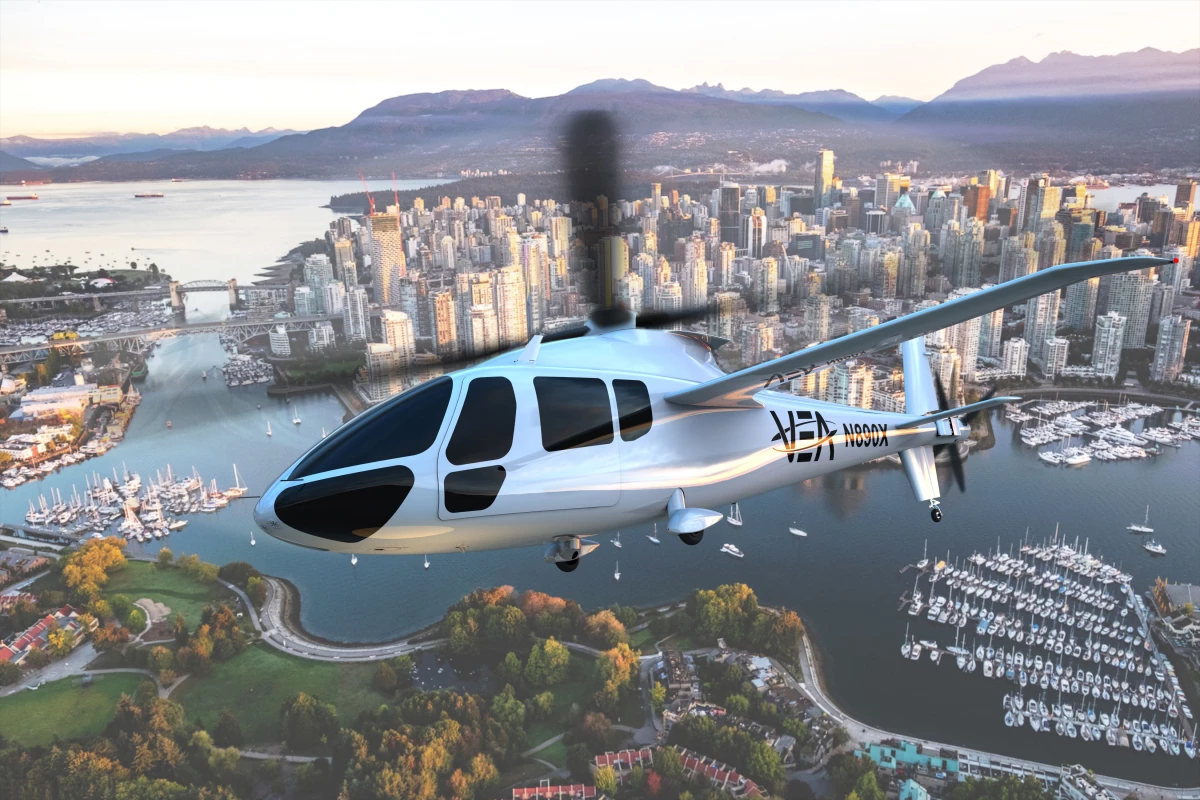Hydrogen fuel cell innovator HyPoint has teamed up with Piasecki Aircraft on a headline project to build the world's first manned hydrogen helicopter – but in the process, they plan to develop and certify a H2 system that can be integrated into any eVTOL aircraft, radically boosting its range capability.
The two companies have raised an initial US$6.5 million toward what could genuinely be a revolutionary powertrain for electric aircraft; a fully FAA-certified hydrogen system would instantly allow electric aircraft to carry several times more energy on board, vastly boosting flight endurance while also enabling fast refueling instead of slow charging.
HyPoint claims its "turbo air-cooled" fuel cell system" will be able to achieve up to 2,000 watts per kilogram (2.2 lb) of specific power, which is more than triple the power-to-weight ratio of traditional (liquid-cooled) hydrogen fuel cells systems. It will also boast up to 1,500 watt-hours per kilogram of energy density, enabling longer-distance journeys." For comparison, today's commercially available lithium battery packs rarely break the 300-Wh/kg mark.
HyPoint says its lightweight fuel cell system has already been validated in bench-testing of lab prototypes, and that it's capable of generating enough continuous power to handle the energy-hungry demands of vertical takeoff and landing without the need for a heavy buffer battery.
The initial agreement is a plan for five 650-kW hydrogen fuel cell systems, which will be integrated into Piasecki's PA-890 electric compound helicopter. This is a pretty wild design in its own right; an electric slowed-rotor five-seater with wide wings for efficient cruise and a tail rotor that tilts backward in forward flight to become a pusher prop. Oh, and the wings tilt 90 degrees upward to get out of the main rotor's way on takeoff and landing.

The PA-890 has been designed to meet existing FAA Part 27 standards for commercial certification, and Piasecki is already in discussions with the FAA to outline certification criteria. The hydrogen powertrain will add an extra wrinkle; the FAA has granted experimental certification to several fuel cell aircraft, but to the best of our knowledge nobody's fully type-certified a hydrogen aircraft for commercial use yet.
But whoever gets it done will be able to go around eVTOL companies offering a relatively simple, pre-approved, risk-sharing pathway to a massive boost in range and endurance – one that may look very attractive to many air taxi operators.
If urban air mobility takes off the way the eVTOL industry hopes, these things will be flying in and out of vertiports like taxis at a taxi rank. Now imagine the size of your taxi rank is limited to the top floor of a multi-story urban car park – maybe you've got enough room for four to eight landing pads. Now imagine the cabs need to plug in and charge for half an hour every time they land.
It's a nightmare; battery-powered eVTOLs may not have the endurance to hover, twiddle their thumbs and wait until a space clears out. And every minute these things sit on the ground is money lost in peak hour. A long-range, fast-fueling hydrogen system could be a game-changer in this scenario.

“We are laser-focused on the development and qualification of a 650-kW system for our PA-890 eVTOL Compound Helicopter, which would be the world’s first manned hydrogen-powered helicopter," says John Piasecki, President and CEO of Piasecki Aircraft. "Success will pave the way for collaboration with other eVTOL OEMs with different platform sizes to ensure broad application of this technology."
“Initial lab testing funded by Piasecki last winter demonstrated the technical viability of HyPoint’s hydrogen fuel cell system," he continues. "While we are benchmarking HyPoint’s technology against alternatives and continue to rigorously test and validate findings, we are very optimistic. Our objective is to develop full-scale systems within two years to support on-aircraft certification testing in 2024 and fulfill existing customer orders for up to 325 units starting in 2025.”
Source: HyPoint






